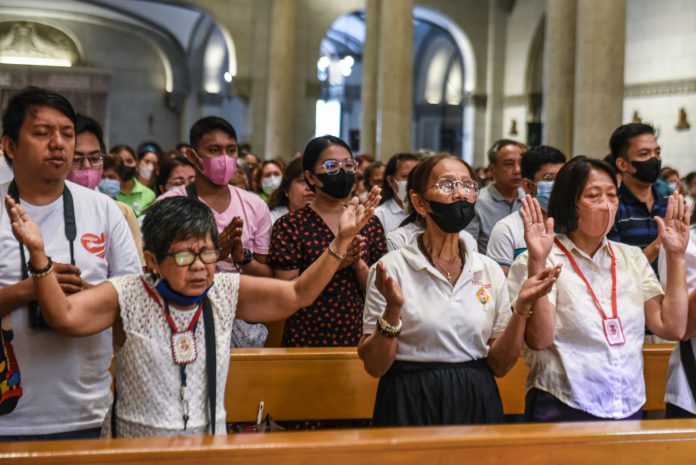Every Holy Thursday, groups of Catholic faithful across the world embark on what’s known as the Seven Churches Visitation or “Visita Iglesia.”
In this special tradition, pilgrims adore Christ in seven different altars of repose while praying and reflecting on the passion of Christ.
At the end of each Holy Thursday Mass, the priest strips the altar and removes the Eucharist from the tabernacle to place it in repose on another nearby altar.
The Seven Churches Visitation (or Pilgrimage) is credited as beginning in Rome with St. Philip Neri in the 1500s. Neri would lead groups of faithful to visit each of the seven basilicas of Rome on Holy Thursday night as a way of keeping watch with Christ as though at the Garden of Gethsemane before his passion.
Today, the devotion is primarily practiced in Latin America, Italy, Poland, and the Philippines.
Each visit calls on the faithful to reflect on the seven final places Jesus went from his arrest on Holy Thursday to his death on Good Friday.
At each church, pilgrims kneel before the altar of repose, meditate on a scriptural excerpt, and offer prayers and adoration.
How do pilgrims going on this seven-church journey meditate on the passion of Christ?
Here are the Scripture excerpts to reflect on at each church:
1) Jesus in the Garden of Gethsemane (Lk 22:39-46)
2) Jesus before Annas (Jn 18:19-22)
3) Jesus before Caiaphas (Mt 26:63-65)
4) Jesus before Pilate (Jn 18:35-37)
5) Jesus before Herod (Lk 23:8-9; 11)
6) Jesus before Pilate again (Mt 27:22-26)
7) Jesus’s crucifixion and death (Mt 27:27-31)
At the first church, the faithful recall Jesus going from the upper room, where he celebrated the Last Supper with his disciples, to the Garden of Gethsemane, where he earnestly prayed and sweated blood in his agony over what was about to take place.
In the second church, the pilgrims meditate on Jesus being taken from the Garden of Gethsemane by the armed crowd to the house of Annas, the father-in-law of Caiaphas the high priest, where he was interrogated and slapped in the face.
In the third church, the prayer focuses on Jesus being brought to the house of Caiaphas, where he was beaten, spat upon, insulted, and endured a painful night in captivity.
The focus of the reflection for the fourth church is the first time Jesus was brought before Pilate, the Roman governor of the region. There Jesus was accused by the Jewish religious authorities of being a rival king to Caesar.
In the fifth church, the pilgrim follows the Lord as he is taken to King Herod, who along with his guards mock him.
The sixth church recalls Jesus being taken from Herod and brought before Pilate for the second time and then scourged, crowned with thorns, mocked, and condemned to death.
The last church commemorates Christ carrying the cross on his shoulders from the Praetorium, where Pilate yielded to the crowd’s demand for his crucifixion, to Mount Calvary where he suffered excruciating pain, died, and was laid to rest in a nearby tomb until his resurrection from the dead on Easter Sunday.
This is part of an article originally published on the website of the Catholic News Agency









